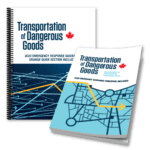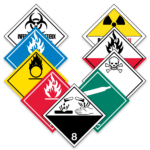Due Diligence Defense in the Hazardous Material Industry
The hazardous material industry plays a crucial role in modern society, providing essential materials for various sectors. However, working with hazardous materials requires a high level of responsibility and attention to safety. Due diligence in this context refers to the comprehensive and proactive approach taken by companies to identify, assess, and mitigate potential risks associated with these materials. In this article, we will delve into the concept of due diligence defense in the hazardous material world.
Understanding Due Diligence Defense
Due diligence defense is a strategic approach that emphasizes preemptive actions to prevent incidents, accidents, and environmental harm related to hazardous materials. This approach involves rigorous risk assessment, stringent safety protocols, continuous monitoring, and effective communication. The goal is to not only comply with legal regulations but to go beyond compliance and safeguard the well-being of employees, the environment, and surrounding communities.
Key Elements of Due Diligence Defense
Thorough Risk Assessment: Companies must conduct thorough risk assessments to identify potential hazards associated with their operations. This involves evaluating the nature of the hazardous materials, possible exposure scenarios, and the likelihood of adverse events.
Safety Protocols and Training: Implementing strict safety protocols is essential. Employees should undergo comprehensive training to understand the risks, safety measures, and emergency procedures. This includes proper handling, storage, transportation, and disposal of hazardous materials.
Regular Inspections and Audits: Regular inspections and audits help ensure that safety measures are being followed consistently. This proactive approach can identify vulnerabilities and areas for improvement before they escalate into larger issues.
Emergency Preparedness: Having a well-defined emergency response plan is crucial. This plan should outline steps to take in case of accidents, spills, or leaks. Regular drills and scenario-based training can help employees respond effectively in high-stress situations.
Environmental Stewardship: Companies should prioritize environmental protection by minimizing the release of hazardous materials and implementing sustainable practices. This can include investing in pollution control technologies and waste reduction strategies.
Community Engagement: Transparent communication with local communities is vital. Companies should keep nearby residents informed about their operations, potential risks, and mitigation efforts to foster trust and collaboration.
Conclusion
Due diligence defense in the hazardous material world is a critical responsibility that companies must uphold to ensure the safety of their employees, the environment, and the communities they operate in. By implementing robust risk assessment, safety protocols, training, and proactive measures, companies can successfully navigate the challenges of working with hazardous materials. There are many examples of companies that have a strong commitment to doing their due diligence, not only to minimize risks but also to enhance reputation and build trust among stakeholders. Ultimately, a well-executed due diligence defense strategy is the cornerstone of a safer and more sustainable hazardous material industry.
Do you have questions about shipping dangerous goods? Our team of experts is just a call away for our customers at 855.734.5469 or send us an email, we’re happy to help.
Stay up to date and sign up for our newsletter!
We have all the products, services, and training you need to ensure your staff is properly trained and informed.
 TDG Publications TDG Publications |
 Non-Worded Labels Non-Worded Labels |







